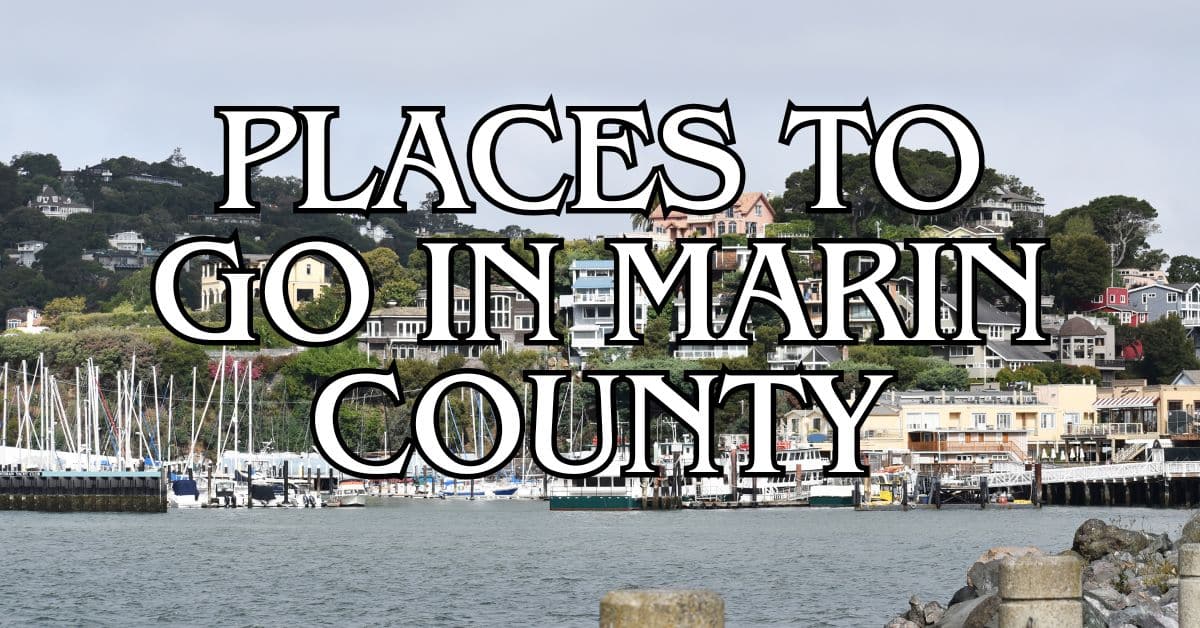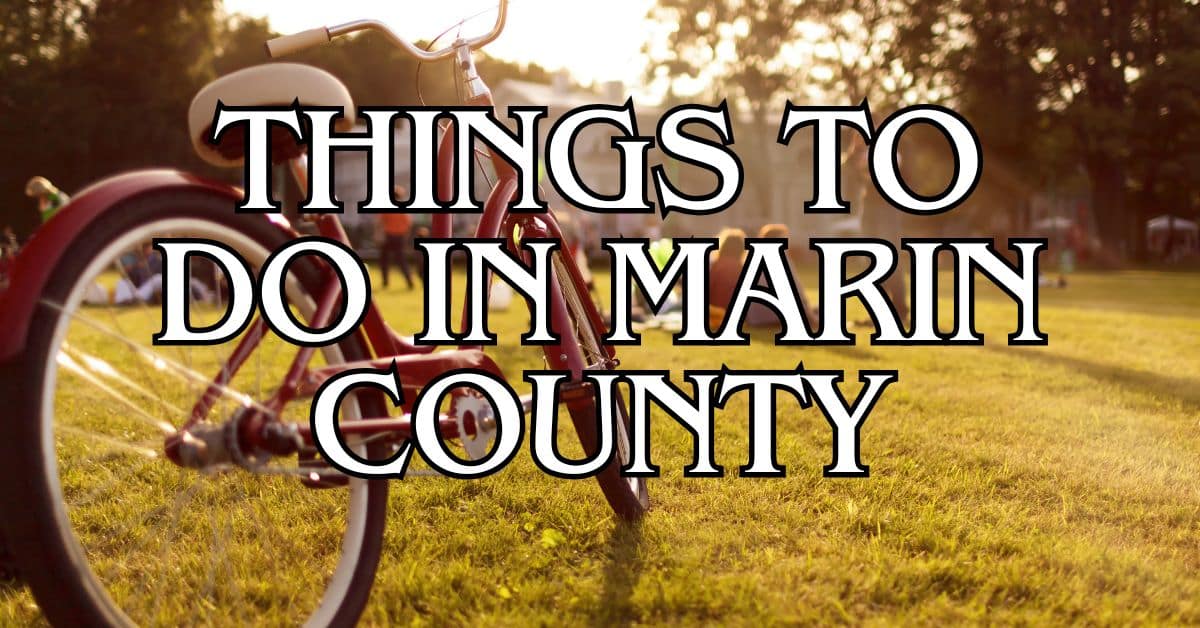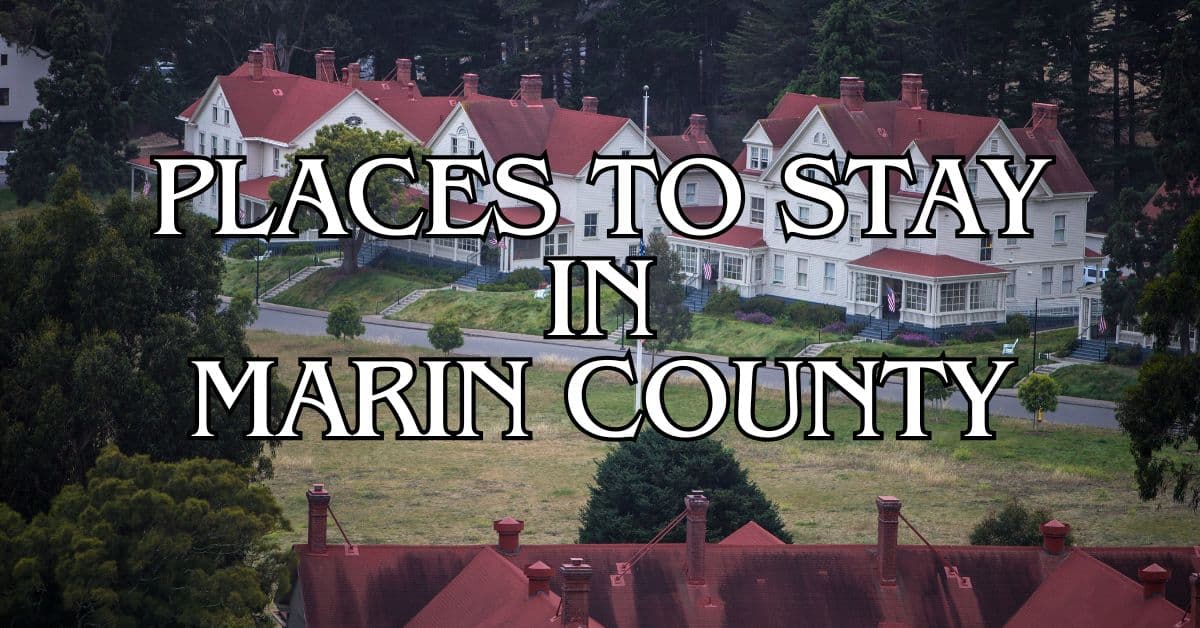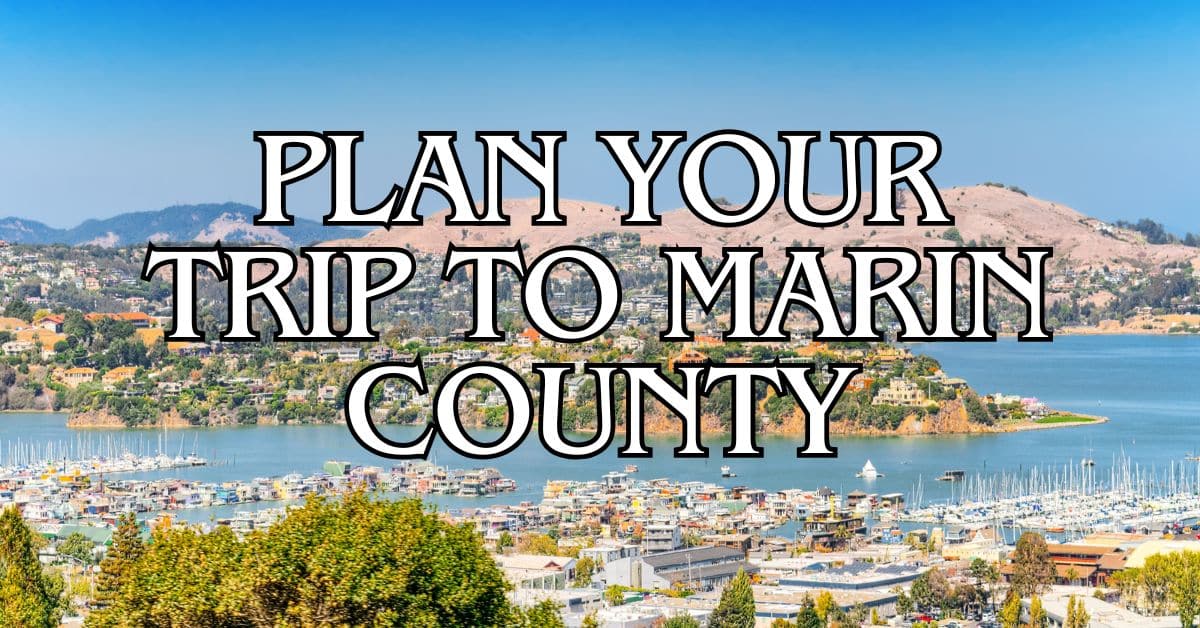Tucked along the edge of Tomales Bay, Inverness feels like a real escape from the daily grind. This small coastal town is the jumping-off point for exploring the natural wonders of Point Reyes National Seashore. There’s a handful of cozy lodges and local spots to eat—most of them celebrate the area’s seafood and farm-fresh produce.
Inverness is known for its stunning natural attractions including the iconic Point Reyes Lighthouse, the photogenic Cypress Tree Tunnel, and beautiful beaches along Tomales Bay State Park. These landmarks pull folks in all year, but honestly, spring and fall usually have the best weather for exploring. If you’re up for a little adventure, you’ll find secret beaches and quiet trails that most people never see.
Get a discount of 15% to 70% on accommodation in Marin County! Look for deals here:
Marin County Hotels, Apartments, B&Bs
Visiting Inverness isn’t just about ticking off tourist spots—it’s about soaking up that blend of wild nature and small-town charm. The area’s different landscapes offer something for everyone. You can paddle a kayak on Tomales Bay or wander through trails that feel a million miles from civilization. Drakes Estero is another spot that’s worth the detour, especially if you like peaceful water views.
Overview of Inverness, California
Inverness sits quietly in western Marin County, California. It’s a coastal town where natural beauty and a relaxed vibe are just part of daily life.
Geographic Location and Setting
You’ll find Inverness perched on the eastern shore of Tomales Bay, right on the Point Reyes Peninsula. It’s about 40 miles northwest of San Francisco, tucked away in West Marin. The town is surrounded by the protected wilds of Point Reyes National Seashore, which gives it a remote, almost hidden feel.
Rolling hills, coastal bluffs, and thick forests shape the landscape. The Cypress Tree Tunnel, a favorite for photographers, is close by. The dramatic coastline invites you to explore beaches, estuaries, and winding trails.
Inverness is basically the front door to a bunch of outdoor adventures. The Point Reyes Lighthouse, perched out at the peninsula’s tip, gives you sweeping views and maybe even a chance to spot migrating whales.
History and Community
Back in the 1880s, Inverness started as a getaway for San Franciscans. The town’s name? Borrowed from a Scottish founder’s hometown. After the 1906 earthquake, more people built summer cabins here.
Now, about 1,300 people call Inverness home. Folks here care a lot about keeping things rural and protecting the natural setting. Most of the shops, restaurants, and inns are run by local families.
Artists, writers, and nature lovers have always gravitated to this place. You’ll see their influence in the galleries and quirky shops around town. Even though the Bay Area isn’t far, Inverness has managed to hang onto its mellow, creative spirit.
Climate and Travel Seasons
Inverness has that classic coastal climate—never too hot or too cold. Summer days hover between 65-75°F, with foggy mornings that usually burn off by lunch.
Winters bring more rain, but it rarely gets colder than 40°F. Spring (April-June) is when wildflowers pop and the skies clear. Fall (September-November) is probably the sweet spot: warm, sunny, and not crowded.
If you want the best weather and fewer people, visit in September or October. Summer weekends can get packed with Bay Area day-trippers. If you don’t mind a little rain, winter is quiet, with empty beaches and a cozy feel.
Whale watching? That’s best from January through April, when gray whales cruise past the coast.
Getting to Inverness
Inverness sits in west Marin County, about an hour and a half from San Francisco if you’re lucky with traffic. You’ve got a couple of ways to get here, whether you’re driving scenic backroads or braving public transit.
Driving from San Francisco
The straightest shot from San Francisco is over the Golden Gate Bridge, up Highway 101 North. Take the exit for Sir Francis Drake Boulevard, then wind your way through San Anselmo and Fairfax.
Stay on Sir Francis Drake all the way to Olema, hang a right on Highway 1, and after a few miles, turn right again onto Inverness Way. The drive usually takes 1.5 to 2 hours, but honestly, Bay Area traffic can be unpredictable.
If you’re feeling adventurous, take Highway 1 along the coast through Muir Beach, Stinson Beach, and Bolinas. It’s slower and twistier, but the ocean views are worth it.
Coming from the North Bay? Head south from Petaluma, rolling through Tomales and Marshall along Tomales Bay.
Public Transportation Options
Public transit isn’t exactly easy out here, but it’s doable. The West Marin Stagecoach (Route 68) rolls into Inverness, with the first bus leaving at 6:20 AM.
Here’s the basic route from San Francisco:
- Hop on Golden Gate Transit to San Rafael.
- Transfer to the West Marin Stagecoach Route 68.
- Ride it out to Inverness.
It’ll take you about 2.5 to 3 hours, give or take. Check the Marin Transit site for up-to-date schedules—buses don’t run super often, especially on weekends and holidays.
Uber and Lyft work in the area, but don’t count on them for a last-minute ride home. It’s smart to book your return trip in advance if you can.
Nearby Towns and Destinations
Point Reyes Station is just 3 miles away and has more restaurants, shops, and services than Inverness.
Mill Valley makes a good pit stop if you’re coming from San Francisco—grab a bite or stretch your legs.
Other nearby towns worth a look:
- Olema (5 miles) – Small, historic, with a couple of dining choices.
- Marshall (12 miles) – Famous for its oyster farms along Tomales Bay.
- Bolinas (14 miles) – A quirky, secluded beach town with a fiercely local vibe.
- Tomales (18 miles) – Rural and full of old buildings.
You can easily do a driving loop from Inverness through these towns for a full West Marin experience. Each place has its own thing going on, so don’t rush.
Top Attractions in the Town of Inverness
Inverness is the kind of place where natural beauty and a bit of artsy character come together. Its location near Point Reyes National Seashore makes it a magnet for anyone who loves the outdoors, beaches, hiking—or just poking around local galleries.
Point Reyes National Seashore
The national seashore wraps right around Inverness, so you’ve got 71,000+ acres of protected coastline at your doorstep. Beaches, cliffs, forests—it’s all here.
Wildlife is everywhere. You might see tule elk, elephant seals, or even gray whales from January to April. Birders, bring your binoculars—over 490 species have been spotted.
The Point Reyes Lighthouse, built in 1870, still stands at the peninsula’s tip. It’s only 37 feet tall, but the views are huge. The place feels like the edge of the world on a foggy morning.
Don’t skip the Cypress Tree Tunnel. It’s just a row of old cypress trees, but man, it’s photogenic—especially if you get there before the crowds.
Drakes Beach and Shoreline
Drakes Beach is one of the easiest, family-friendly shoreline spots near Inverness. Wide sand, dramatic white cliffs, and usually less wind than the outer beaches.
The Kenneth C. Patrick Visitor Center at Drakes Beach has some surprisingly cool exhibits about marine life and local history. Sir Francis Drake may have landed here in 1579, though historians still debate it.
Limantour Beach, just north of town, runs for nearly two miles and is great for beachcombing. The water’s shallow, so it’s safe for wading, and even in summer you won’t feel crowded.
If you want tide pools, head to McClures Beach during low tide. You’ll find sea stars, anemones, and hermit crabs tucked into the rocks.
Bear Valley Trail
Bear Valley Trail is the go-to hike around here. It starts about 10 minutes from Inverness and is a mostly flat 8.2-mile round trip through lush forests, ending at the Arch Rock overlook.
The trail is easy enough for most people and follows a creek, with a few bridges to cross. Springtime brings out the wildflowers.
If you’re short on time or energy, check out the 2.8-mile Earthquake Trail near the Bear Valley Visitor Center. It loops through land shifted by the 1906 earthquake and has signs explaining what happened.
Mountain bikers can ride the first section of Bear Valley Trail, but bikes aren’t allowed once you hit the wilderness area.
Local Art and History
The Inverness Store, dating back to 1898, is part general store, part local hangout. Inside, you’ll find everything from groceries to gifts made by local artists—and honestly, their deli sandwiches are pretty good.
Right nearby, the Jack Mason Museum of West Marin History packs a lot of the region’s story into a small space. Old photos, ranching artifacts, maritime bits—it’s a quick but interesting stop.
Local galleries feature art from people who clearly love Point Reyes. Gallery Route One, over in Point Reyes Station, usually has contemporary pieces with an environmental twist.
And then there’s the Point Reyes shipwreck—a photogenic old boat that ran aground in the 1930s. It’s partially burned now, but the bow still makes an iconic shot against Tomales Bay.
Outdoor Activities and Recreation
Inverness is a dream for anyone who wants to get outside. The mix of coastline, forests, and open water means there’s always something to do, whether you’re hiking, paddling, or just watching wildlife.
Hiking Trails Near Inverness
Bear Valley Trail gets most of the love, and for good reason. It’s 8.2 miles round trip, weaving through forest to a knockout coastal view. The path is gentle, so families and seasoned hikers both enjoy it.
If you want something shorter, Earthquake Trail (0.6 miles) highlights the San Andreas Fault with signs and even a fence offset by the 1906 quake.
Tomales Point Trail (9.4 miles round-trip) gives you sweeping views of the Pacific and Tomales Bay. Tule elk herds graze in the meadows—bring a jacket, though, because the wind can surprise you.
The Cypress Tree Tunnel is more of a stroll than a hike, but it’s worth it for the photos alone.
Kayaking and Water Adventures
Tomales Bay is usually calm, making it perfect for kayaking and paddleboarding. Several places in Inverness rent gear and offer guided trips, no matter your skill level.
Popular Kayaking Options:
- Sunset tours (try to catch the bioluminescence in summer)
- Wildlife paddles
- Shellfish foraging trips (seasonal, and you’ll need a permit)
Blue Waters Kayaking runs trips out to hidden beaches you can’t reach by car. Sometimes they even include a picnic with local treats.
In winter, you might spot migrating whales from your kayak. Summer’s warmer, so it’s a good time for swimming or paddleboarding near Heart’s Desire Beach.
Wildlife Watching Opportunities
Point Reyes is a birdwatcher’s paradise—about 45% of North America’s bird species have been seen here. Look for herons, egrets, and ospreys along the bay.
The Tule Elk Reserve at Tomales Point is home to one of California’s few wild elk herds. September and October are the rutting season, when the males put on quite a show.
Marine Mammals to Watch For:
- Harbor seals (all year)
- Elephant seals (December-March at Chimney Rock)
- Gray whales (January-April)
- Humpback whales (in summer)
If you’re lucky, you might spot bobcats or coyotes in the meadows early or late in the day. And don’t forget the tidepools—at low tide, they’re full of colorful sea stars, anemones, and crabs.
Exploring Point Reyes
Point Reyes National Seashore is a jaw-dropping stretch of coastline just a quick drive from Inverness. Here, rocky headlands and broad beaches meet, all shaped by the mighty San Andreas Fault that slices right through the landscape.
Point Reyes Lighthouse
Perched on a windswept bluff at the park’s western tip, the Point Reyes Lighthouse has watched over these rough waters since 1870. For more than 100 years, it helped ships steer clear of disaster, until it retired in 1975.
Getting there’s a bit of an adventure: cruise down Sir Francis Drake Boulevard, park, then stroll about half a mile to the visitor center. After that, brace yourself for the 308 steps leading down to the lighthouse. Your legs might complain, but the views are absolutely worth it.
If you want the best experience, try weekday mornings when the skies are clear. Fog tends to roll in during the afternoons—especially in summer—and can hide everything. Winter brings migrating gray whales, so bring binoculars if you’re hoping for a glimpse.
Visiting Hours: Thursday through Monday, 10am to 4:30pm
Note: They’ll close the steps if winds pick up, so check conditions before you go.
Visitor Center and Exhibits
Bear Valley Visitor Center is the main hub for Point Reyes. It’s just outside Point Reyes Station and makes a great first stop.
Inside, you’ll find hands-on exhibits about local geology, wildlife, and the long human history here. The earthquake display is a favorite, showing how the San Andreas Fault shaped everything. Rangers are always around to share the latest trail updates or wildlife news.
Close by, you can check out the Morgan Horse Ranch and Kule Loklo, a recreated Coast Miwok village—both worth a quick detour.
Visitor Center Hours:
- Weekdays: 10am-5pm
- Weekends/Holidays: 9am-5pm
Ranger-led programs pop up daily, so look for the schedule if you want a deeper dive into the area’s natural wonders.
Scenic Drives Around Point Reyes
If you’re up for a drive, there are some truly scenic routes here. Pierce Point Road winds through old ranchland, offering up Tomales Bay views and a shot at spotting tule elk.
Sir Francis Drake Boulevard snakes across the peninsula, connecting Point Reyes Station to the lighthouse. You’ll pass weathered dairy ranches and catch glimpses of the ocean between green hills.
The Cypress Tree Tunnel near the radio station is a must for photographers—a row of Monterey cypress trees arches overhead, creating a tunnel that’s almost magical.
Limantour Road heads out to quiet beaches and broad wetlands. Early mornings are best, when the fog lifts and the coast reveals itself.
In spring, wildflowers explode along the roadsides, painting the prairies in bold colors.
Local Dining and Culinary Experiences
Inverness takes its food seriously. You’ll find fresh seafood, beloved bakeries, and farm-to-table spots that really showcase what’s grown and caught nearby.
Oysters and Seafood
Oysters are the star here. Saltwater Oyster Depot is a local gem, serving up Tomales Bay oysters (raw, grilled, or baked) in a laid-back spot with water views.
Thanks to the ocean’s proximity, seafood is always top-notch. Menus change with the day’s catch—halibut, salmon, and Dungeness crab all make appearances when in season.
For something more casual, roadside stands sell oysters you can shuck yourself. Some even have picnic tables so you can snack with a view.
Bakeries and Cafés
Bovine Bakery is legendary for its organic pastries. Morning buns and cookies vanish fast, so get there early if you want your pick.
Coffee lovers shouldn’t skip Inverness Park Market. They pour a mean espresso and offer grab-and-go sandwiches—perfect for packing along on a hike.
Point Reyes Station adds more options, like Cafe Reyes, known for wood-fired pizzas in a garden setting. Their breakfast and pastries are also standouts.
Farm-to-Table Restaurants
Marin County’s farming roots shine on local menus. Side Street Kitchen is a favorite for comfort food made with local ingredients—try the rotisserie chicken and whatever sides are in season.
Osteria Stellina (technically in Point Reyes Station, but close) serves Italian-inspired dishes that change with what’s fresh from local farms and fisheries. Their pastas and meats really show off the area’s bounty.
Most places work directly with nearby producers. You’ll spot farm names on menus—a nice touch that reflects the community’s commitment to sustainable food.
Where to Stay in Inverness
Inverness has a range of cozy places to stay, from waterfront inns to tucked-away cabins. Whether you want a bit of luxury or something simple, you’ll find a good match.
Bed and Breakfasts
Ten Inverness Way B&B sits among redwoods and feels wonderfully peaceful. It’s eco-friendly, serves organic breakfasts, and the rooms look out onto gardens. Expect rates between $175 and $250 per night.
Ferrando’s Hideaway Cottages offers private cabins with kitchenettes and outdoor seating, just minutes from Tomales Bay. These rustic-chic spots start around $165 nightly.
Dancing Coyote Beach has waterfront cottages with direct bay access. They’re simple but comfy, with kitchens and outdoor grills. Guests love kayaking right from the property.
Vacation Rentals
Airbnb and VRBO list lots of Inverness homes, running $150-$400 per night. Many have water views, decks, and full kitchens.
Bay View Cottage is a standout, with sweeping Tomales Bay vistas and big outdoor spaces. It’s great for families.
For something smaller, Shell Cottage offers a cozy fireplace and garden setting, plus it’s close to town.
Many rentals come with perks like:
- Hot tubs
- Fire pits
- Water access
- Pet-friendly options
Nearby Lodging in Point Reyes Area
Point Reyes Seashore Lodge in Olema has upscale rooms and cottages, about 15 minutes from Inverness. There’s a farm-to-table restaurant and lovely gardens. Rooms typically run $239-$350.
Tomales Bay Resort & Marina offers waterfront stays with boat slips. It gets a 3.8/5 rating (from 237 reviews) and has an outdoor pool and easy water access.
Nick’s Cove in Marshall features historic cottages built over the water, luxury amenities, and a fantastic seafood restaurant right on site.
The Cottages at Point Reyes Seashore are another good pick near the park entrance, offering a bit of privacy and quick park access.
Nature and Wildlife in Marin County
Marin County is a patchwork of wild landscapes—ancient forests, grassy prairies, and protected coastline. Its parks and preserves shelter all sorts of native wildlife, making it a dream for nature lovers.
Redwood Forests and Nature Walks
The redwoods here are something else—towering, silent, and impossibly old. You’ll find them in places like Muir Woods and Samuel P. Taylor State Park.
Many of these giants soar over 250 feet and have stood for a thousand years or more. Their dense canopies create a cool, shady world below, where unique plants and animals thrive.
As you wander, keep an eye out for banana slugs, woodpeckers, and maybe a deer or two among the ferns. Weekday mornings are quieter if you want the trails mostly to yourself.
Some trails, especially in Muir Woods, are wheelchair-friendly thanks to raised boardwalks that protect roots while welcoming everyone.
Tule Elk and Native Species
Point Reyes is home to California’s only tule elk preserve. These elk nearly vanished in the 1800s but have rebounded thanks to conservation work.
You’ll spot herds at Tomales Point—especially late summer to early fall, when the males are showing off. Bring binoculars for a better look (and to keep your distance).
Other local wildlife includes:
- Bobcats
- Coyotes
- River otters
- Over 490 bird species
Along the coast, elephant seals crowd certain beaches seasonally, while harbor seals hang around all year. Gray whales pass by from December to May, a real treat if you catch them.
Wildlife is most active at dawn and dusk, so those are your best bets for sightings.
Day Trips and Nearby Destinations
Inverness is the perfect base for exploring nearby gems—think coastal views, fresh seafood, and plenty of ways to get outside.
Exploring Tomales Bay
Tomales Bay stretches 15 miles along Point Reyes’ eastern edge. Its calm waters are ideal for kayaking and wildlife watching. Several outfitters along Highway 1 rent kayaks.
You might spot harbor seals, bat rays, and a parade of birds. In winter, watch for migrating whales from the shore.
Tomales Bay State Park has sandy, east-facing beaches—warmer and less windy than the ocean side—and hiking trails with killer views.
For something memorable, try a nighttime kayak tour in summer to see the water light up with bioluminescence.
Marshall and Oyster Farms
Marshall, a tiny town on Tomales Bay, is famous for its oyster farms. Oyster farming here dates back to the 1800s.
Hog Island Oyster Company runs farm tours and lets you sample oysters right on the spot—super fresh, obviously.
The Marshall Store is a go-to for barbecued and smoked oysters, with outdoor tables overlooking the bay.
As you drive through, watch for seafood stands run by local fishermen. They often have the freshest catch at great prices.
Marshall’s shoreline is peaceful, perfect for fishing or just soaking up the views.
Stinson Beach and Bolinas
Stinson Beach offers three miles of soft sand—great for swimming, surfing, or just stretching out in the sun. The water’s sometimes a bit warmer here than elsewhere on the coast.
In town, you’ll find a few casual eateries, a small market, and shops with beach gear. It’s easy to lose track of time just hanging out.
North of Stinson, Bolinas is a quirky, hard-to-find spot (locals have a thing for removing road signs). But if you make it, you’ll be glad you did.
Bolinas Lagoon sits between the two towns and is a magnet for bird watchers. Bring binoculars for herons, egrets, and migratory birds.
Agate Beach near Bolinas has tide pools at low tide—look for starfish, anemones, and tiny crabs.
Parks and Protected Landscapes
Inverness is your gateway to some of Northern California’s wildest, most varied landscapes. Coastal wilderness, forested hills, and protected bays all come together here, drawing nature lovers back again and again.
Samuel P. Taylor State Park
Samuel P. Taylor State Park sits about 15 minutes from Inverness and offers a peaceful redwood forest experience. You’ll find old-growth redwoods along Lagunitas Creek—if you’re lucky, you might even spot salmon during spawning season.
The main campground has 60 sites, each with picnic tables and fire rings. Day visitors can pick from miles of hiking trails, from easy creek-side strolls to tougher climbs up Barnabe Peak (1,466 feet).
Cyclists love the paved Cross Marin Trail, which runs along an old railroad grade. If you’re up for a moderate loop, the South Creek Trail winds three miles through the redwoods.
In summer, parking fills up fast on weekends, so it’s smart to show up early. There’s an $8 day-use fee per vehicle.
Natural Wonders and Preserves
Point Reyes National Seashore pretty much defines the protected landscapes near Inverness. It’s massive—71,000 acres of everything from wild beaches to forested ridges.
Some of the best trails? The Earthquake Trail (just 0.6 miles) and Chimney Rock Trail (1.8 miles), both popular for wildflowers in spring and the chance to spot whales. At the tip of the peninsula, you’ll find the famous Point Reyes Lighthouse.
Tomales Bay State Park is a go-to for swimming and kayaking. Its sheltered coves are perfect if you’ve got kids in tow.
The Cypress Tree Tunnel—yeah, you’ve seen it on Instagram—draws photographers with its dramatic Monterey cypress canopy. Early mornings or late afternoons? That’s when you get the best light.
If you’re into birdwatching, check out Millerton Point. Shorebirds and waterfowl hang out in the calm bay waters.
Travel Tips for Visiting Inverness
Heading to Inverness, California? A little planning goes a long way, especially if you want to enjoy the place and not mess up the local environment—or get caught off guard by the coastal weather.
Sustainable and Responsible Tourism
Inverness sits right inside the fragile ecosystem of Point Reyes National Seashore. Please, stick to marked trails when hiking—it’s better for the plants and the critters.
Bringing reusable water bottles and shopping bags isn’t just smart; locals actually appreciate it. You’ll see plenty of folks at the small markets and family-run restaurants—supporting them keeps the place unique and authentic.
If you can, try visiting on weekdays. It’s way less crowded at popular spots like Heart’s Desire Beach, and you’ll probably have a better time.
And one last thing—respect private property when you’re out exploring. Much of the land around Inverness belongs to residents or is protected habitat, so a little courtesy goes a long way.
Weather and Packing Essentials
Inverness sits in a quirky coastal microclimate, so you’ll probably wake up to fog—especially during summer. Temperatures shift a lot, so bring layers you can peel off or throw on as needed.
I’d definitely toss a windproof jacket in your bag, even if it’s July. The breeze coming off Tomales Bay? It can catch you off guard, especially when the sun dips.
If you plan to hit the trails or wander the beaches, go for comfy walking shoes. Waterproof ones are a smart move if you’re rolling through during the rainy stretch from November to March.
Sun protection matters here. Those UV rays sneak through, even on cloudy or foggy days. Don’t skip the sunscreen, sunglasses, and a hat—future you will thank you.
A small backpack is handy for day trips—just enough space for water, snacks, and whatever extra layers you end up carrying as you explore.
Get a discount of 15% to 70% on accommodation in Marin County! Look for deals here:
Marin County Hotels, Apartments, B&Bs





